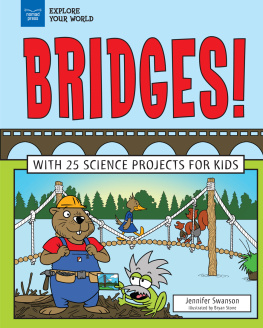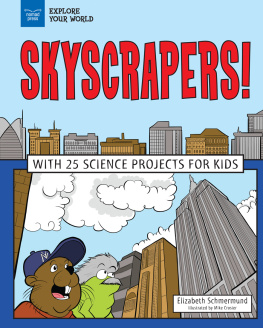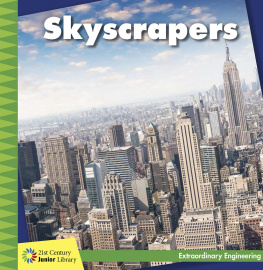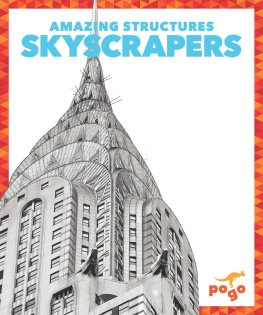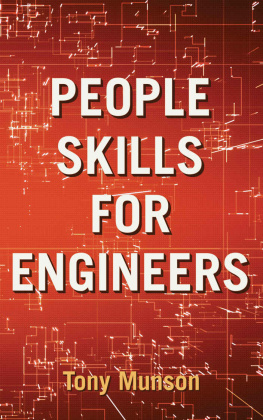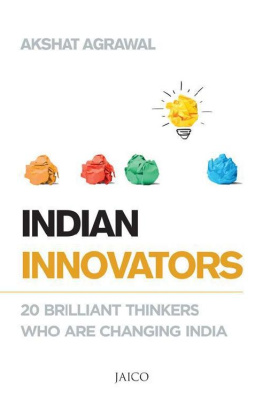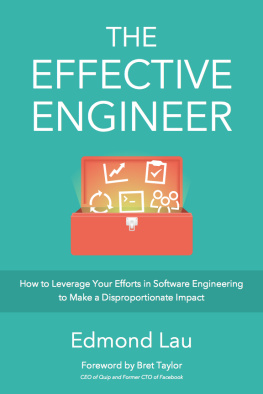PRAISE FOR BUILT
A wonderfully absorbing book about an engineer and her passion for construction.
Professor Mark Miodownik, materials engineer, broadcaster and author of Stuff Matters
Roma makes the complex principles of structural engineering accessible to everyone with clear explanations and engaging illustrations. It has made me suddenly look at every building I pass in a new way.
Ellen Stofan, former Chief Scientist at NASA
A charming tribute to one womans love of engineering. Full of fascinating facts and personal stories.
Angela Saini, author of Geek Nation and Inferior: How Science Got Women Wrong and the New Research Thats Rewriting the Story
A necessary reminder of the wonderful human ingenuity behind the worlds greatest engineering projects, from Roman aqueducts to Londons magnificent Shard. Built will inspire readers of every stripe.
Erica Wagner, author of Chief Engineer
A book about real engineering written by a real engineer who can really write.
Henry Petroski, author of The Road Taken
A passionate, often personal love letter to the science of structure. Whether exploring Pompeii or assembling pineapple upside-down cake, Agrawals journey will change the way you look at the structures you take for granted.
Jennifer Ouellette, author of The Calculus Diaries
Roma Agrawal is a much-needed role model for the next generation of engineers. Most girls never give a thought to civil engineering as a career. This book will change that.
Rob Eastaway, mathematician and author of Any Ideas? Tips and Techniques for Creative Problem Solving
Roma Agrawal makes engineering thrilling, accessible and thoroughly enjoyable. Built is another great example of how women can write brilliantly about so-called male subjects. Bring on the female engineers!
Andrea Wulf, historian and author of Chasing Venus: The Race to Measure the Heavens
How come we have skyscrapers, bricks, bridges and tunnels? Its down to structural engineers, but who are these awesome makers? Men in hard hats? Not necessarily! Roma Agrawal has helped to design some iconic structures that grace our cities. Here she gives an insiders captivating account, so rich in history and so full of verve that she is bound to make others want to follow in her footsteps. Built reveals how human ingenuity keeps us safe from the raw forces of nature, all in a style that is down-to-earth as well as funny and personal.
Uta Frith, psychologist and author of Autism: Explaining the Enigma
Hurrah! A joyful book that dissects our architecture to reveal the decisions behind the anatomy we rely on every day.
Gaia Vince, journalist, broadcaster and author of Adventures in the Anthropocene
BUILT
For Maa,
and for little Samuel.

CONTENTS
With one hand, I clutched my precious stuffed-toy cat, afraid that I would lose it. With the other, I clung to my mothers skirt. Terrified and exhilarated by the new, strange, unknown world in constant motion around me, I held on to the only two things that felt familiar.
When I think of Manhattan now, I am always taken back to my first visit, as an impressionable toddler: the funny smell of the car exhausts, the shouts of the streetside lemonade vendors, the swarm of people rushing by, bumping into me unapologetically. It was an overwhelming experience for a child who lived far from the big city. Here, instead of open sky, I saw towers of glass and steel blocking out the sun. What were these monstrous things? How could I climb them? What did they look like from above? I turned my head left and right as my mother dragged me along the busy streets. Stumbling after her with my head raised, I was transfixed by these pillars that reached towards the clouds.
At home, with my miniature cranes, I stacked building blocks to recreate what I had seen. At school, I painted tall rectangles on big sheets of paper in bright, bold colours. New York became part of my mental landscape as I visited and revisited the place over the years, admiring new towers that appeared on the ever-changing skyline.
For a few years we lived in America, while my father worked as an electrical engineer. We didnt live in one of the soaring skyscrapers that so impressed me on my visits to Manhattan, however, but in a creaking wooden house among the hills upstate. When I was six, my father gave up engineering to look after the family business in Mumbai, and I went to live in a seven-storey concrete tower that looked out towards the Arabian Sea. When my Barbie dolls finally arrived safe and sound at my new home, after a long sea journey in a storage container, it was of course essential that they were made comfortable. Pop helped me reassemble my cranes, laying out a large white sheet so I wouldnt lose any pieces. Making loud, whirring noises, I lifted long plastic tubes and manoeuvred pieces of card into position, building a house for my dolls. My first step, perhaps, towards a career in engineering.
Having an American accent and as youll soon discover if you havent already a tendency to be a bit geeky, I found my new school a challenge at first. I was teased by some for being a scholar. But gradually I found friends and teachers that got me. Through large gold-framed glasses, I eagerly read physics, maths and geography textbooks, and I loved art class, although I struggled with chemistry, history and languages. Mom, who had studied maths and science at university and had worked as a computer programmer, encouraged my growing interest in science and maths, assigning me extra homework and reading. Throughout my school years I loved these subjects best and I resolved to be an astronaut or an architect when I grew up. Back then, Id never even heard the term structural engineer, and never imagined that one day I would play a part in designing a magnificent skyscraper The Shard.
Since I loved learning so much, my family decided I should finish my schooling in another country, as it would be a great opportunity to broaden my horizons. And so, aged fifteen, I moved to London to study maths, physics and design at A level. Another new school in a new country, but this time I quickly sought out kindred spirits girls who found Faradays law as fascinating as I did, and who experimented in the lab just for fun. Brilliant teachers paved my way to studying physics at university, and I moved to Oxford.
At school, physics made sense to me. At university, it didnt at least to begin with. Light was both a wave and a collection of particles? Space-time could be curved?? Time travel was mathematically possible?! I was hooked, but it was tough stuff to get my head around. Academically, I always felt like I was a few steps behind my peers. It was a real reward when I finally figured out how something worked. I balanced hours in the library with ballroom and Latin dance lessons, learning to wash clothes and to cook (though perhaps not all that skilfully, as youll see), and generally fending for myself. I was enjoying physics; my childhood dreams of going into space or becoming an architect became distant memories. At the same time, however, I had little idea of what I wanted to do with my life.
Then, one summer, I worked in the physics department at the University of Oxford, drawing up plans of all the fire-safety features in the various buildings. The task in itself was hardly world-changing, but the people who sat around me were working on projects that were. They were engineers, and their job was to design the equipment that physicists could use to seek out the particles that define how our world works. As you might imagine, I badgered them with questions and was astonished at what their jobs entailed. One was designing a metal holder for a glass lens a simple task, you might think, except that the whole apparatus had to be cooled to -70 Celsius. Metal contracts more than glass, and unless the holder was cleverly and carefully designed, the cooling metal would crush the lens. It was just a tiny piece in a immense maze of machinery, but a complex and creative challenge. I spent hours of my free time trying to figure out how I might solve the problem.


